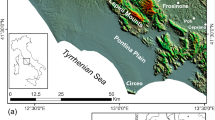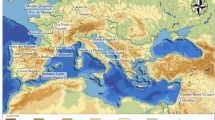Abstract
IN the course of extensive economic palæontological researches based on world-wide investigations, it has been found necessary to review and re-assess the bases of mid-Tertiary correlation and dating. We confirm the validity of the five-fold subdivision of the Oligocene and Lower Miocene as represented by the faunas of the type localities of the Lattorfian, Rupe-lian, Chattian, Aquitanian and Burdigalian. These five faunal assemblages can readily be correlated through to Southern Europe, the Mediterranean, the Middle East, East Africa, Pakistan and India, and the Far East as a whole.
This is a preview of subscription content, access via your institution
Access options
Subscribe to this journal
Receive 51 print issues and online access
$199.00 per year
only $3.90 per issue
Buy this article
- Purchase on Springer Link
- Instant access to full article PDF
Prices may be subject to local taxes which are calculated during checkout
Similar content being viewed by others
Author information
Authors and Affiliations
Rights and permissions
About this article
Cite this article
EAMES, F., BANNER, F., BLOW, W. et al. Mid-Tertiary Stratigraphical Palæontology. Nature 185, 447–448 (1960). https://doi.org/10.1038/185447b0
Issue Date:
DOI: https://doi.org/10.1038/185447b0
This article is cited by
-
The American Oligocene
Nature (1960)
-
West-Pacific Stratigraphic Correlation
Nature (1960)
Comments
By submitting a comment you agree to abide by our Terms and Community Guidelines. If you find something abusive or that does not comply with our terms or guidelines please flag it as inappropriate.



